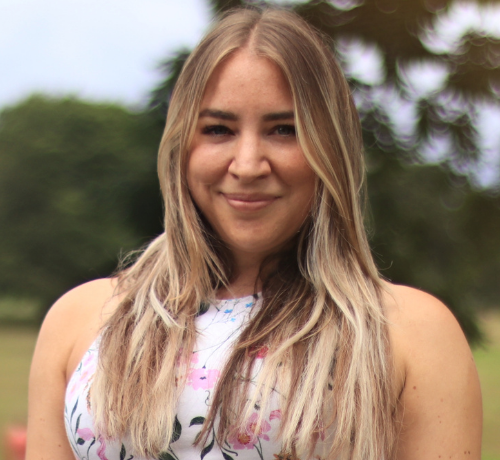If you've fallen into an Instagram beauty rabbit hole recently, you've likely stumbled across an influencer sporting an intense-looking red light mask. Often white with a glaring red shadow, the masks are reportedly used to soothe inflammation and redness, among other things. But did you know that some people are using red light therapy to promote hair growth and increase hair density?
If you're struggling with female pattern hair loss or thinning strands from stress, you might be curious about this new technology and whether it really works. To find out everything you need to know about red light treatments for hair, read on. Plus, discover the best natural products you should use to support thicker, fuller looking hair.
#include-related-slider#
What Is Red Light Therapy For Hair Loss?
Red light therapy treatment, or low-level light therapy, has recently been gaining attention as a natural, effective and safe way to stimulate hair growth. It works like this: when the visible red light laser is applied to the scalp (at the ideal duration, intensity and wavelength), the body can harness the light and turn it into cellular energy. This stimulates the body's natural healing process — and potentially promotes hair regrowth.
"Two separate studies have shown that red light laser therapy works for male pattern baldness and female pattern baldness," said hair expert and cosmetologist Ganima Abdullah.
In the first study, the participants were treated every other day for four months, which resulted in 60 treatments total. There was a 35% increase in hair growth for this group. The second study lasted for 14 weeks, and the therapy was conducted daily and showed a marked increase in hair density.
Shop the Best Products for Thinning Hair
Causes of Hair Loss
Hair loss can really dent confidence, whether you're suffering from female pattern baldness or simply noticing a few more strands than usual clogging up the shower drain. If you're experiencing challenging hair loss, finding a solution that really works is important.
Hair loss can happen to anyone at any time for many different reasons. Some of the leading causes of hair loss include:
- Stress: High anxiety levels impact not only the body and mind but also the hairline. This hair loss is temporary, and when you alleviate stress, your hair often returns to its natural length and thickness.
- Hormonal changes: Whether it's due to pregnancy or menopause, hormonal shifts in the body can trigger changes in hair volume and density.
- Medical conditions: Autoimmune diseases such as thyroid conditions can attack the immune system and cause patchy hair loss. Scalp infections and fungal issues can also lead to hair growth problems.
- Family history: Androgenetic alopecia is a genetic type of hair loss that's passed down through the family. It usually impacts more men than women, but women can also be affected. Typical symptoms of androgenic alopecia include a receding hairline and bald spots in men.
- Tight hairstyles: Tugging at your delicate strands to create braids and slick ponytails can exert pressure on the scalp and cause traction alopecia. Although it usually clears up once you stop wearing the hairstyle, hair loss might persist if the scalp has been damaged to the point that scarring occurs.
Read More: What to Know About Stress & Hair Loss
What Does Red Light Therapy for Hair Loss Look Like?
For light therapy to be effective, therapeutic wavelengths need to come from LED sources that deliver maximum power. Though you can get laser devices at home to treat hair loss, you can maximize results by going to a professional for treatment.
Treatment caps claim to encourage new hair growth by delivering the light wavelengths that stimulate the mitochondria (the energy center in every cell) and promote blood flow across the scalp. In addition, red light therapy can influence the creation of new capillaries, bringing essential nutrients and oxygen to cells.
In the same way that natural sunlight can encourage plants to thrive, red wavelengths can reduce oxidative stress in the body, helping the body to regrow hair. In addition, red light treatment can effectively and efficiently shift energy around the body, potentially speeding up the healing process.
A professional can create a treatment plan based on the state of your hair loss and hair goals. They'll help determine the accurate wavelength level, length and frequency of your treatments.
Tried-And-True Tips for Support Thinning Hair
Red light therapy for hair growth is a modern trend that's making waves by positively impacting the hair and body. But it can be expensive, and results aren't guaranteed. Here are some other ways you can support thicker looking hair:
Reduce Stress
Learning to recover from stressful situations can help the body relax and allow the hair cycle to maintain its usual flow. Whether you regulate the body with mindfulness techniques or make a significant life change to reduce stress levels, your hair will thank you for it.
Check-in with a dermatologist
If hair loss is causing you great distress, check in with a professional for sound advice. They'll walk you through your symptoms and offer a treatment plan if needed.
Try a Hair Serum
For an easy addition to your daily routine apply a dropper of GRO Hair Serum all over your scalp just once a day. It can:
- Reduces signs of shedding by up to 85%*
- Increase the appearance of hair density by up to 56%*
*Based on a 120-day independent, third-party clinical study with 40 participants using GRO Hair Serum once daily.
Maintain a healthy diet
Maintaining your hair's overall wellness means reflecting on your overall lifestyle. A balanced diet packed with vitamins and minerals will keep the body functioning at a high level, so hair grows without complication.
Massage the scalp
Maintaining good circulation at the scalp helps keep hair follicles stimulated. Whether you massage with your fingers or an intuitively designed scalp massager, all hair types will benefit from this TLC.
Does Red Light Therapy For Hair Loss Actually Work?
A 2017 trial considered how effective low-level laser therapy was on women living with hair loss. Researchers found that women receiving red light therapy at 650mn experienced a 51% increase in their hair count.
Studies suggest that red light therapy may positively impacts hair follicles, but the results are inconsistent overall. Red light therapy works for some people but not others. At the moment, it's unclear why this discrepancy exists, and more research is still needed to determine who is a good candidate for red light therapy.
Pros and Cons of Red Light Therapy
"Outside of clinical studies, the cost is rather expensive for professional treatment, ranging from $4000 to $20,000 for the treatment duration," said Abdullah. Handheld at-home devices are available, but once again, results can vary. Here are the basic pros and cons of red light treatment:
Pros
- It's a non-invasive treatment
- Might reduce inflammation across the scalp
- May increase collagen production
- May improve circulation
Cons
- Time-consuming: It can take several sessions a week for several months for results to show.
- Expensive: Professional treatment can cost thousands of dollars.
- Not consistently effective: Your results may vary.
- Might not be safe: Laser devices don't go through the same scrutiny and testing that medicines do, leaving the long-term safety of this treatment unestablished.
The Takeaway
Red light therapy is a trending treatment that some say helps reverse the frustrating signs of hair loss. Of course, as with every treatment, there are positives and negatives, but if you're willing to invest a chunk of money and wait for results, it may have the potential to be beneficial for hair loss.
Thankfully, there are many affordable options that keep hair looking and feeling great like eating a balanced diet, reducing stress and switching to all-natural products for thinning hair.
Of course, always check in with a professional if you're experiencing significant hair loss within a short period of time.
#include-related-slider#
More From VEGAMOUR
Photo credit: Space_Cat/iStock




















